Statistics show a long awaited shift in personnel trends, with more people joining the UK’s Regular Armed Forces over the most recent 12 month period than leaving. It is the first time this balance has tipped in favour of growth after an extended stretch of net losses.
The figures indicate 14,100 people joined the Regular Forces over the most recent rolling period. This represents an increase of 1,650, or around 13 percent, compared with the preceding window. By contrast, 13,860 personnel left, an 8 percent fall in departures driven by a sharp drop in voluntary outflow.
The Ministry of Defence figures show that this is the first instance in a considerable period where recruitment has outpaced exits. Net growth is modest at roughly 240 personnel, but the underlying direction marks a tangible shift.
The total strength of UK Armed Forces Service Personnel stands at 182,060, a figure described in the release as stable. This includes all Regulars, Gurkhas, Volunteer Reserves and other categories of service. Within that total, the trained strength across the Royal Navy, Royal Marines, RAF and Army is recorded as 125,680, slightly down on the previous snapshot.
Outflow remains dominated by voluntary departures. Roughly 6,620 personnel opted to leave through voluntary outflow, equating to about 60 percent of all exits. Service surveys continue to cite family pressures, limited work life balance and external career opportunities as the most common drivers behind those decisions.
Intake patterns differ sharply across the services. The Navy and Marines saw an inflow rise of 14.5 percent, the Army 7.4 percent, and the RAF 37.7 percent. The overall improvement is likely due to targeted changes in recruitment processes, strengthened marketing and adjustments to training capacity.
Although the department presents the figures as a sign of progress, they also highlight enduring challenges. The trained strength continues to edge downward and voluntary outflow remains high relative to historic norms. The gap between intake and outflow is narrow enough that any reversal in one metric would quickly return the armed forces to net losses.
What these figures show is a system still under pressure but no longer moving in only one direction. Whether the current intake trend holds for long enough to rebuild trained strength is the question that follows.


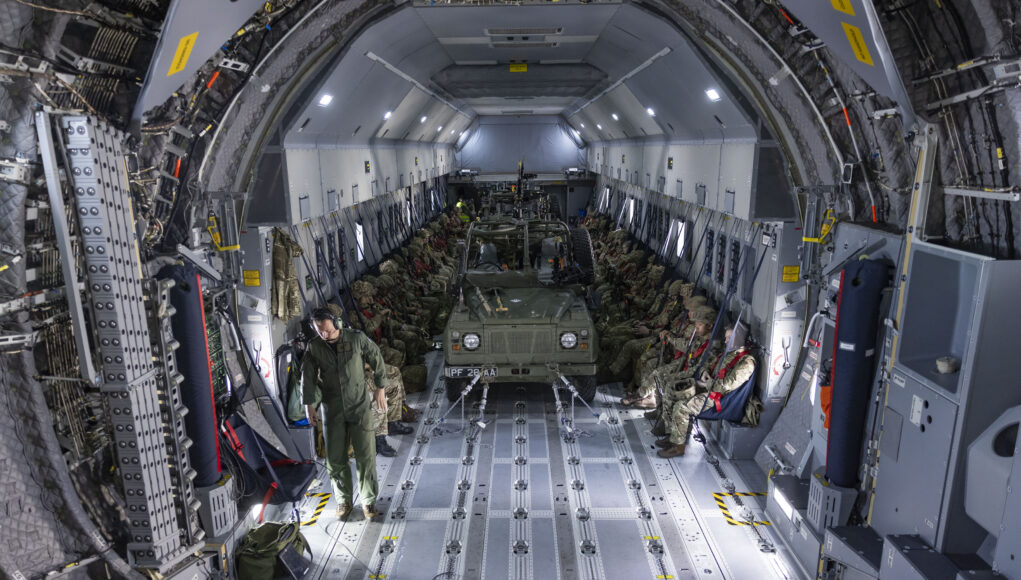



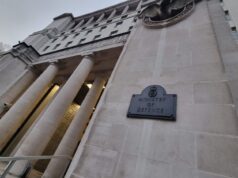
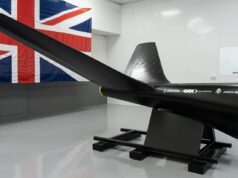


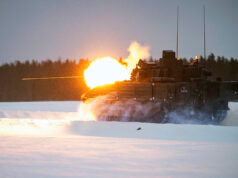

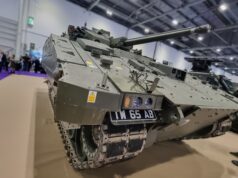

A sliver of good news.
It’s a bit more than that of you read the report, e.g. The number of applications to the RN/RM Regular Forces in the 12 months to 30 June 2025 is 33,910 (a provisional figure), which is an increase of 23.8 per cent compared to the 12 months to 30 June 2024 (27,390).
The RN/RM is again inducting about 3,500 trainees a year – which is probably getting close to the current combined capacity of Raleigh, Britannia and Lympstone, although there may be some mothballed buildings and facilities which could be re-opened if needed. Combined with improved retention, the size of RN/RM is currently increasing by 350 personnel p.a. Admittedly there is a long way to go after years of 1000+ reductions, but it’s a start.
Hopefully this can translate into larger armed forces eventually, especially if the time taken to actually recruit those who want to join can be reduced.
Some good news, long may It continue.
I might apply to be a Frigate Captain. ⛵
frigate about it!
Well that sunk my ambitions then.
😁
Very good news.Be good if we mirrored what the French are proposing with their conscription model
Me thinks you would have issues enforcing conscription. Many would rather choose a prison cell than join the military at this point. Can’t say I blame them
It’s not conscription the French are doing, its a voluntary and paid 10 month service for those that want to contribute. I think it’s a good idea as a halfway house measure
Agreed. For example, offer a decent stipend to encourage young people to take a year out of education for military service before starting university. Then tempt them to join the reserves and earn some extra beer money, far more interesting than a part-time job at a fast food outlet or a convenience store. Capping the numbers at say 10,000 a year (just 1% of the one million 18-year olds!) will give it some competitive kudos, whilst avoiding overwhelming the military training system.
I don’t know what the new French conscription model is but we have only ever only commenced conscription at the start or in the middle of a world war!
Apart from National Service, which ran from 1949-1963
Craig, I did say ‘commenced’ conscription.
Yes i know that Graham.If you research the French model it is voluntary and geared at homeland defence only.It will be interesting to see how it goes
A lot of conscription models are working like that these days because nobody wants the mass of a full conscript army.
The West German Army was a full conscript force and you had 3 whole Corps, 12 Divisions, of Regular Forces, and another 3 Corps of Reserves with 6 Divisions. And then there where another 6 East German Division. So if Germany introduced full conscription you’d probably be looking at a force of about 24 Divisions. The cost of maintaining a force like that is not something anyone wants to bear.
So yeah pretty much everyone is doing voluntary conscription or lottery conscription models atm.
Thank you for that Dern.In your honest opinion can you see the British armed forces introducing a voluntary or lottery conscription?I think its a vote winner and would be a good thing.
I don’t see it happening. The UK doesn’t have a history of conscription like the continental powers do, we only had peace time conscription for a brief period before and after WW2, and we didn’t even use it to maintain the BAOR, so it’s not something our forces lean towards naturally.
I also don’t think it would be hugely beneficial to the UK. With short terms of service, even on a voluntary or lottery basis a force suddenly has to deal with a lot of churn. Currently the British Army can count on at least 4-5 years service for each recruit. If you took, say 10,000 conscripts on 10 month contracts, then you need to allocate enough of your army to train 12,000 conscripts per year, plus any non-conscripts that are on longer term contracts. That has implications on your force structure.
Let’s look at what the benefits of this sort of conscript system are. The soldiers you conscript aren’t very useful. They’re locked into Home Service contracts, and given how long training a modern soldier takes, you are only going to get about 2 months of service out of them after training. Maybe enough for one training exercise before returning to civilian life. So they don’t actually add much mass to the army, despite taking up a large portion of the training establishment and a decent chunk out of the budget.
The advantage is you get a (comparatively) large portion of the population with some basic military skill. It means if you need to suddenly expand the armed forces you can, from a trained personnel perspective, do that a lot more easily than if you didn’t use this system. That’s really useful if you are Estonia, or Poland, or Finland, because all you need for your soldiers to be effective is for them to stash a recoilless rifle in the village hall and have a rifle and a drum of ammunition in the house. You don’t even need a car because you just walk into the woods and hunt Russians. The further from the front you go, the harder it is to make this work. German Heimatschutzregimente probably won’t add much to combat power, they lack the mobility and support to be deployed in combat roles in Poland, but what they can do is provide rear echelon security and help direct supplies and reinforcements forwards efficiently.
Now how does that apply to the UK? We aren’t a front-line nation. A paramilitary like the Estonian Defence League, the Polish TDF or the Lithuanian Rifle Union, where ex-conscripts self organise into local defence forces is pretty much out of the question for us, defence of the Home Islands is a forward defence by Land in Europe and on the North Sea. A Finnish style system where army has more formalised reserve structures that have assigned roles won’t work terribly well either, since in that system most of the conscripted forces are static. British Forces need to be mobile since they need to get to the fight, not wait for the fight to get to them. Local forces like Heimatschutzregimente that direct reinforcements forwards and provide security to logistics hubs? Maybe but Britain is not going to be a logistics hub. NATO forces aren’t going to land in the UK to re-embark and move to the continent, they’re going to land directly in Hamburg, Antwerp, Rotterdam etc.
What the UK needs isn’t conscription. What the UK needs is to focus on equipping what it has to a better standard. That means: 1) The existing Volunteer Reserves need to be fully motorised or even mechanised (Hell, designate a Reserve Brigade an Armoured formation in an ideal world) and placed into a division that can follow on 1 and 3 Divisions.
2) Enable the creation of professional full time and deployable at high readyness CS and CSS units for the Brigades that are lacking. And have them fully equipped.
3) The Strategic Reserve (what used to be called the Regular Reserve) needs to be de-atrophied, and equipment stocked for them.
Without those three things being solved any conscription model in the UK makes little sense, because you strip funding away from solving those issues in favour of creating an even larger reserve that still can’t deploy and still isn’t equipped.
Thanks for such an in depth and comprehensive response Dern.That is why i frequent this site to learn from people such as yourself.Regards from sunny Devon
Germany and France are to introduce conscription in the face of growing Russian threats. This is not necessarily due to the Ukraine War, but the new World Order and a growing mistrust of the USA. As sad as that reads, the remaining NATO members can no longer hinge their defence spending on US military dependence. Many past US top brass may view this perception as a failure of US foreign policy, while others will believe it is time for the US to cut loose. Conscription may spread across NATO in the coming years, and the UK’s sluggish troop growth may trigger the need to conscript before the end of this parliament.
Europe’s failure is not the United States fault… Look within before you point fingers
Well, in many ways, it is the fault of the US. For too long, the US dominance over the NATO Alliance led most members to believe the Bald Eagle would always be there in good times and bad. The result, a constant drop in defence spending by the other members and this would have continued had it not been for Trump. That said, Trump was right to point out the bloody obvious, but that in turn destabilised the organisation to the point that the US component and commitment are now in question.
It’s not the fault of the US that consistently demanded no duplication of NATO structures within the EU and no concerted EU defence actions? Pull the other one.
Spot on Manrice
US sick of footing europes bill and cant blame them.Especially with supposed meeting of service heads saying the goverment is talking big and not backing it up with cash
Starmer has to start demonstrating the same level of military spending as Germany and Poland if it desires to continue its principal role within NATO. The argument that Britain is not landlocked does not wash as all (apart from the Troubles) campaigns have been away from UK shores, and that means having forces equipped with the best kit we can afford. It won’t take long before Starmer is ordered to the White House to explain why the UK makes a lot of noise about defence, but in truth, hopes it will all go away.
Another factor is not to allow Germany to get too powerful, as we know all too well how power corrupts……’Never again,’ I hear through the trees of Picardy.
Starmer intends including rural broadband in the eventual 5% figure. Any trust in what comes out of his mouth shows serious personality flaws.
We are sick of backing up American wars that they run away from with their tales between their legs. Fight your own fucking sandbox wars.
Maurice, perhaps some Americans think that NATO is only about European security. It is of course about security across the entire Euro-Atlantic region and inclues the security of North America. That’s why the only time that Article 5 was called in NATOs 76-year history, all of NATO came to the aid/support of the USA!
Credit where credit is due, this government has made substantial headway in tackling the recruitment problem. Hopefully the retention problem can also be improved.
Yep, fair.
Good to read a positive story.
I literally was going to add that but thought It might start a Political War !!!!
It’s good news though and to be fair, I do think we should give this government a bit of time to do something longer term. Lets see some orders now and maybe some urgency.
Fingers crossed the housing will help.. but in the end retention is about career progression as well and I. A shrinking service that was an issue.. if they start growing for instance the number of RN ships then you will see retention.
A step in the right direction. Are there any similar statistics for the Royal Fleet Auxiliary?
Nearly 30 years of leaving a TA infantry battalion, I still vaguely remember my section battle drills. And have vague recollections of stripping and cleaning a rifle. Does that qualify as “military experience? 🤣
In a peer war, possibly.
I follow the army full time trade trained strength. That’s down from 70,640 last quarter to 70,300 this quarter. The required strength is 73,000.
Those official figures exclude the Gurkha Brigade I understand.
Intake and outflow are for UK forces. FTTTS includes Gurkhas.
To be a bit clearer, or maybe more confusing, UK Regular forces include Commonwealth and Irish citizens but not Gurkhas. The UK Regular forces Army Trade Trained strength at 01-Oct-25 was 66,250 (Section 6 of the Quarterly Statistics).
PaulS, thanks that 66,250 is the real figure to plan against.
I thought that the last government changed the definition of trained strength from phase 2 trade-trained to just Phase 1 basic training. It was a depressing attempt to mislead, as a recruit is not a lot of value until they have completed their trade training.
To produce a trained infantryman/women takes about six months, 10-12 weeks on the basic Common Military Syllabus aka Phase 1, 14-16 weeks on infantry skills. The technical corps like Sappers, signals, medics take anything from 8 months to over a year.
Are you sure Paul that these figures are Phase 2 trained strength? If so, that is a big increase on recent years, which seems very unlikely.
Good point, I’d forgotten that.
HMG love to spin, twist, and obscure.
They just lie mate.
Hi mate.
They’re not meant to in Parliament, but elsewhere, yes, in effect they are.
This seems to be the way now, if you don’t want to fix it re profile it, just wait until AJAX gets re profiled as a movable field structure so it is only assessed by its abilities when stationary and ability to be transported by a HET.
Strengths, as stated, are Trade Trained phase 2 completed not Trained just phase 1. FTTTS for recent years are:
01-Jul-21 77,820
01-Jul-22 76,750
01-Jul-23 74,110
01-Jul-24 71,350
01-Jull-25 70,640
Few options for young people these days, might as well get their limbs blown off for some stupid unwinable war, followed by years of PTSD.
Imagine joining the Army that thought the SA80 and Ajax were fit for use.
Sad and backward times.
the L85a3 has been fit for purpose for a long time.
sure but it was a liability in Gulf War one… cost lives
MOD then wasted a fortune trying to fix it
and was a commericial failure as pretty much no one else bought it
and now those idiots overpaid for AJAX a very expensive road block
how is anyone supposed to trust in the chain of command when they cant even have working kit
And possible prosecution for all kinds of supposed wrongdoing, like actually being a soldier.